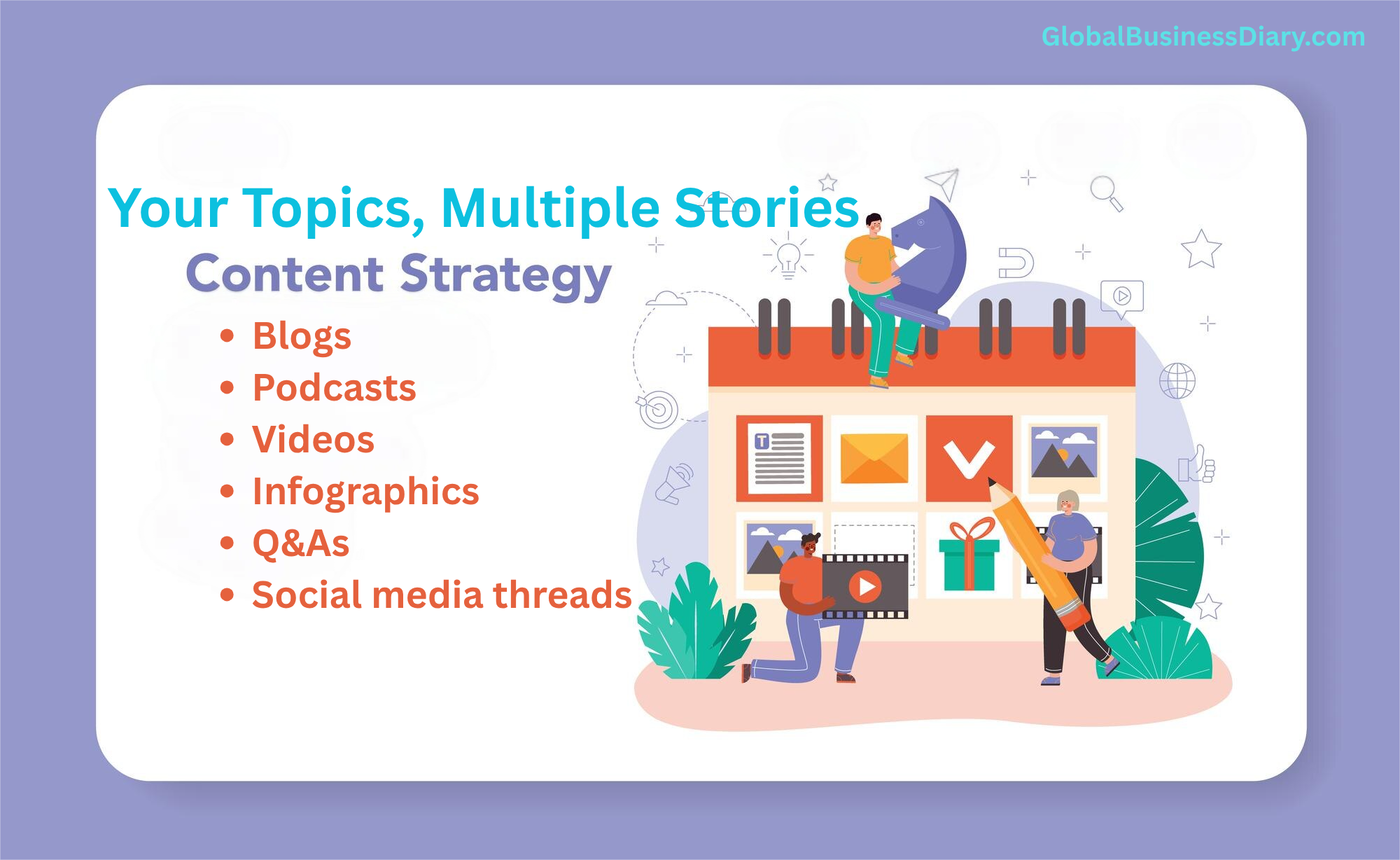Your Topics, Multiple Stories: Advanced Content Strategy Explored

Content is everywhere in this constantly changing digital world. However, there is some content that always ends up capturing the attention of viewers. Apart from that, they also deliver value to convert viewers into buying customers. They do so with a dynamic approach called “Your Topics, Multiple Stories.”
Primarily, this is an advanced content strategy that is more than merely publishing single articles. Rather, it is also about weaving rich and layered narratives around a particular topic. This way, you strive to provide your target audience with multiple perspectives and a deeper dive.
Therefore, read on to get a better idea of the “Your Topics, Multiple Stories” approach. Also, you will learn how to implement it.
Why the Multiple Story Approach Matters?
Obviously, you do not rely on merely one article if you want to research a particular topic. The same is true when you want to learn one skill or want to get information. Rather, you look for a variety of voices, formats, and angles.
In general, these include expert guides to personal stories. Also, they might be infographics and videos. Hence, expect your audience to do the same as well. Meanwhile, if there is anything less (an angle/ a format/ a viewpoint), it will be incomplete for you.
The following are some of the major reasons why you require the “Your Topics, Multiple Stories” framework:
- You will be able to engage with wider audiences. Also, it will enable you to tailor stories to different interests.
- It will help you build topical authority. Moreover, it will boost your SEO performance with interconnected content.
- You will be able to blend facts, trends, emotions, and real-life examples. This way, you can create memorable experiences for your target audience.
Your Topics, Multiple Stories: What Does It Mean?
At the outset, “your topics multiple stories” means you have to choose a single and meaningful theme for your content. Then, you have to tell different stories based on it. Meanwhile, all your stories must showcase different perspectives. Moreover, the formats and objectives are different in each case.
Basically, it is more like a mini-documentary series rather than a one-episode thing. Hence, every story is a core aspect of the larger and more beautiful picture.
Difference Between Single-Story and Multiple-Story Content
| Feature | Single Story Approach | Multiple Stories Approach |
| Depth of Understanding | Surface-level | Deep, nuanced |
| Audience Reach | Narrow | Broad and meets diverse requirements |
| SEO Benefits | Limited | Enhanced (content clustering) |
| Engagement | Flat | Dynamic and higher retention |
| Adaptability (Formats) | One (e.g., mostly blog) | Many (blog, video, podcast) |
| Brand Authority | Moderate | Strong, shows expertise |
| Trust and Credibility | Lower and single viewpoint | Higher and multiple perspectives |
Reasons Why “Your Topics, Multiple Stories” Is Impactful
The following are some of the major reasons why “your topics multiple stories” is really impactful if you want to develop content for your website:
1. You Will Be Able to Engage Deeply
All audiences are not the same. Hence, each of them learns and feels things in a different manner. In fact, some of them like to look at data. Meanwhile, others like to learn through user experiences.
Hence, if you include multiple narratives, you will be able to ensure all your target audiences find themselves in your content. This way will enable you to surely increase attention and retention.
2. Better SEO and Online Authority
Do you know that your content will perform better if you work through content clusters? In general, Google and other search engines prefer related and interlinked content. Basically, you have to build your content around a pillar topic. This will improve your rankings significantly. Moreover, your target audiences will like to explore your site longer.
3. Diverse Audience Reach
If you stick to a single topic or a single story, you will end up losing your potential fans. In this case, you have to change your perspective. Rather, start by answering beginner questions. Also, make sure to satisfy experts. In addition to that, make sure to maintain an emotional connection through your content.
4. Flexibility and Adaptability
You will be able to reach out to your audiences more easily with the following multiple story formats:
- Blogs
- Videos
- Podcasts
- Infographics, and more.
5. Boosts Credibility and Trust
When you develop your content, make sure to cover all the angles of the topic. The following are some of the things you must focus on:
- Pros and cons
- Data and human stories
- Challenges and solutions
This way, you will be able to position your website as honest and authoritative. Moreover, this transparency will help you build trust fast.
How to Build a Multi-Story Content? – Essential Steps
The following are the essential steps you must take if you want to build multi-story content for your website:
- Start by picking a core topic. In this case, you might choose a broad theme relevant to your goals and audience.
- Then, brainstorm from different angles. Also, make sure to list out different perspectives.
- After that, utilize different formats to map the best story types to every angle. For instance, it might be an explainer video for data or a Q&A for the human story.
- Make sure to organize your content pieces. In this case, you might utilize the hub-and-spoke (content cluster) model. In this case, one central “pillar” article links out to the different narrative “spokes.”
- Finally, write a simple and compelling conclusion. Essentially, it must draw all stories together, thereby reinforcing your main point.
Frequently Asked Questions (FAQs)
The following are some of the most common questions you will find regarding “your topics multiple stories”:
Essentially, a content cluster is a group of related articles or stories. However, they are all interconnected around one main topic.
In addition to that, the cluster helps search engines see your website as an in-depth resource. This way, it makes your content more discoverable.
If you want to start telling stories, ask the following questions:
1. Who are your audiences?
2. What problems do they face?
In those cases, utilize personas or real user feedback. This way, you will be able to brainstorm stories to answer questions.
If you want to develop a multi-storied approach, you must choose a mix of formats. Basically, you have to combine the following:
1. Blogs
2. Podcasts
3. Videos
4. Infographics
5. Q&As
6. Social media threads
Follow the Multiple Stories Approach now!
Instant information is available everywhere. Hence, people want information that provides more than mere facts. Therefore, you must develop meaningful stories, multiple perspectives, and value. With the “Your Topics, Multiple Stories” approach, you will be able to deliver all these aspects.
All you have to do is start with an engaging topic. Also, you must explore the topic from different angles. This way, you can make your content a good experience for your readers/viewers.
Read Also:













